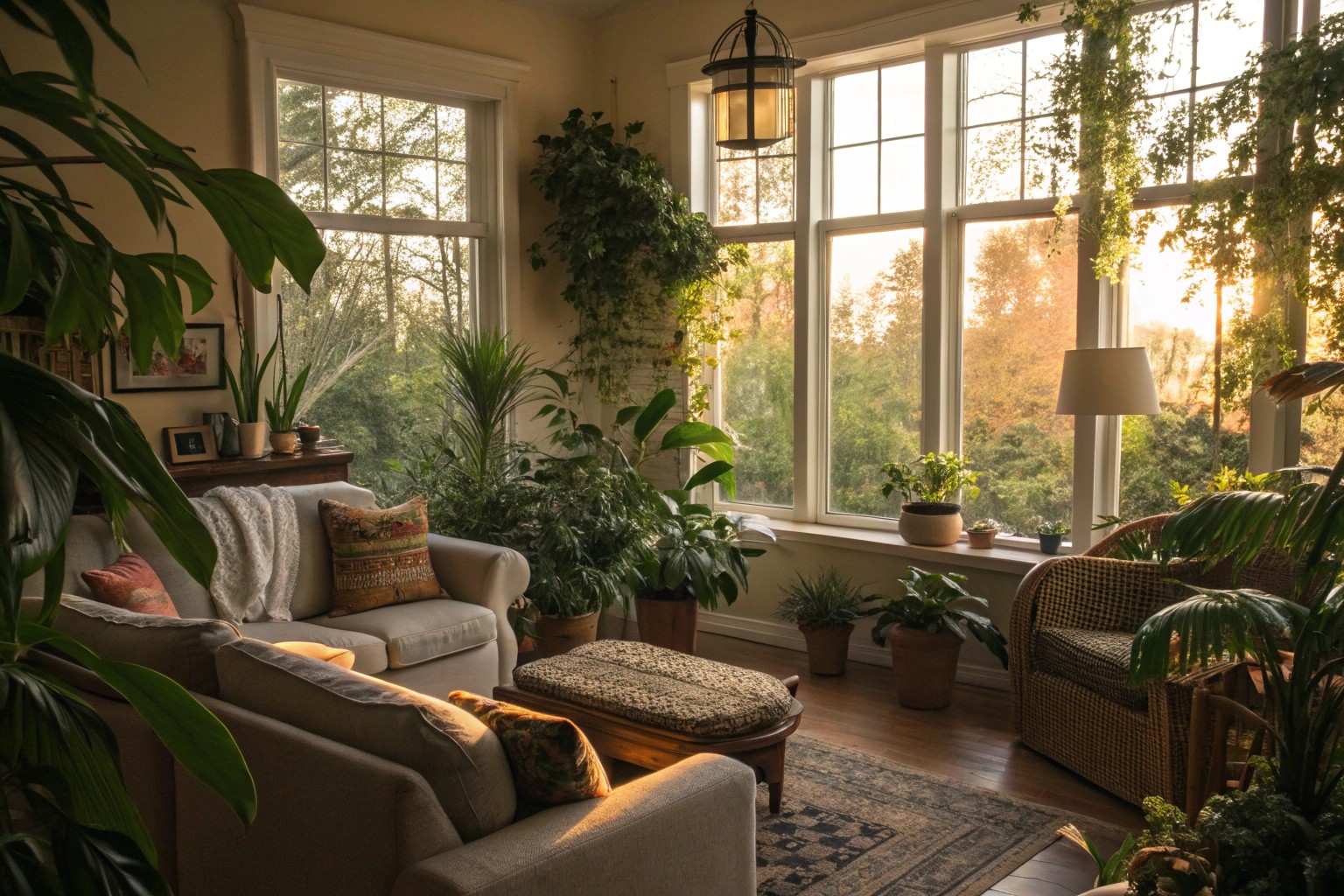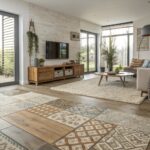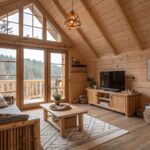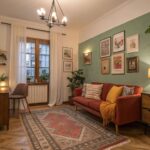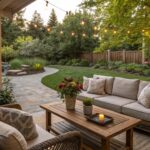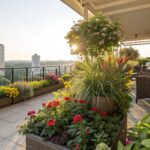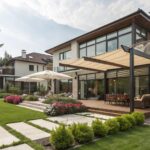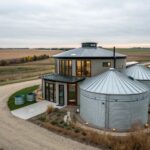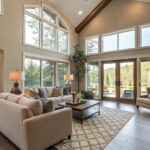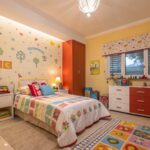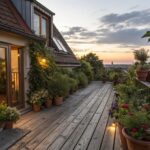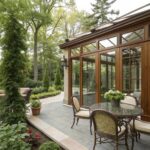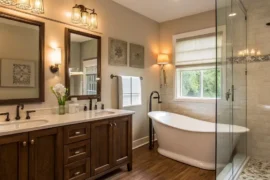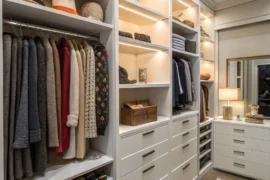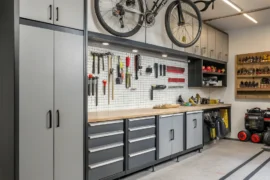Natural element integration has shifted from being merely a design trend to becoming a fundamental strategy for crafting harmonious, sustainable, and restorative living environments. This guide delves into practical methods for weaving nature throughout your home or workspace, utilizing biophilic design principles and real-world examples to help you foster spaces that enhance wellbeing and connection.
Why Natural Elements Transform Our Spaces
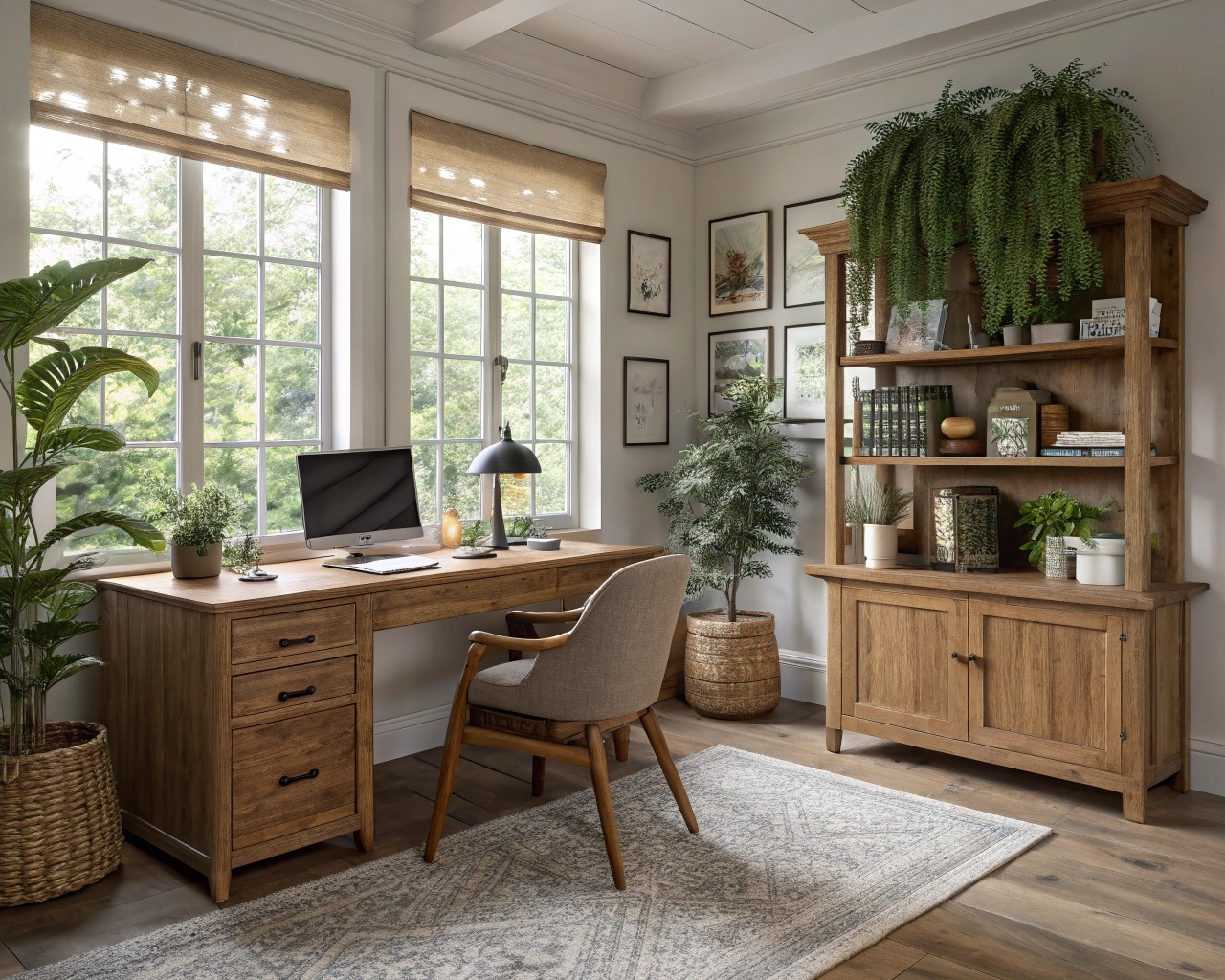
When we weave natural elements into our built surroundings, we engage in more than just decoration; we craft environments that resonate with our inherent link to nature. Scientific research consistently shows that spaces enriched with natural elements lower stress, sharpen concentration, and boost overall wellbeing.
Over my 15 years in design, I’ve observed profound changes when clients embrace natural integration. A particularly striking project involved a high-stress executive whose home office transformation incorporated generous natural light, living plants, and wood features. This resulted not only in an aesthetically pleasing space but, more importantly, one where he reported feeling “finally able to think clearly.”
Benefits of Natural Integration:
- Reduced stress and anxiety levels
- Improved air quality and circulation
- Enhanced creativity and productivity
- Increased sense of calm and wellbeing
- Sustainable and timeless aesthetic appeal
- Greater connection to seasonal changes
- Higher property values and appeal
Core Natural Elements for Integration
Natural Materials
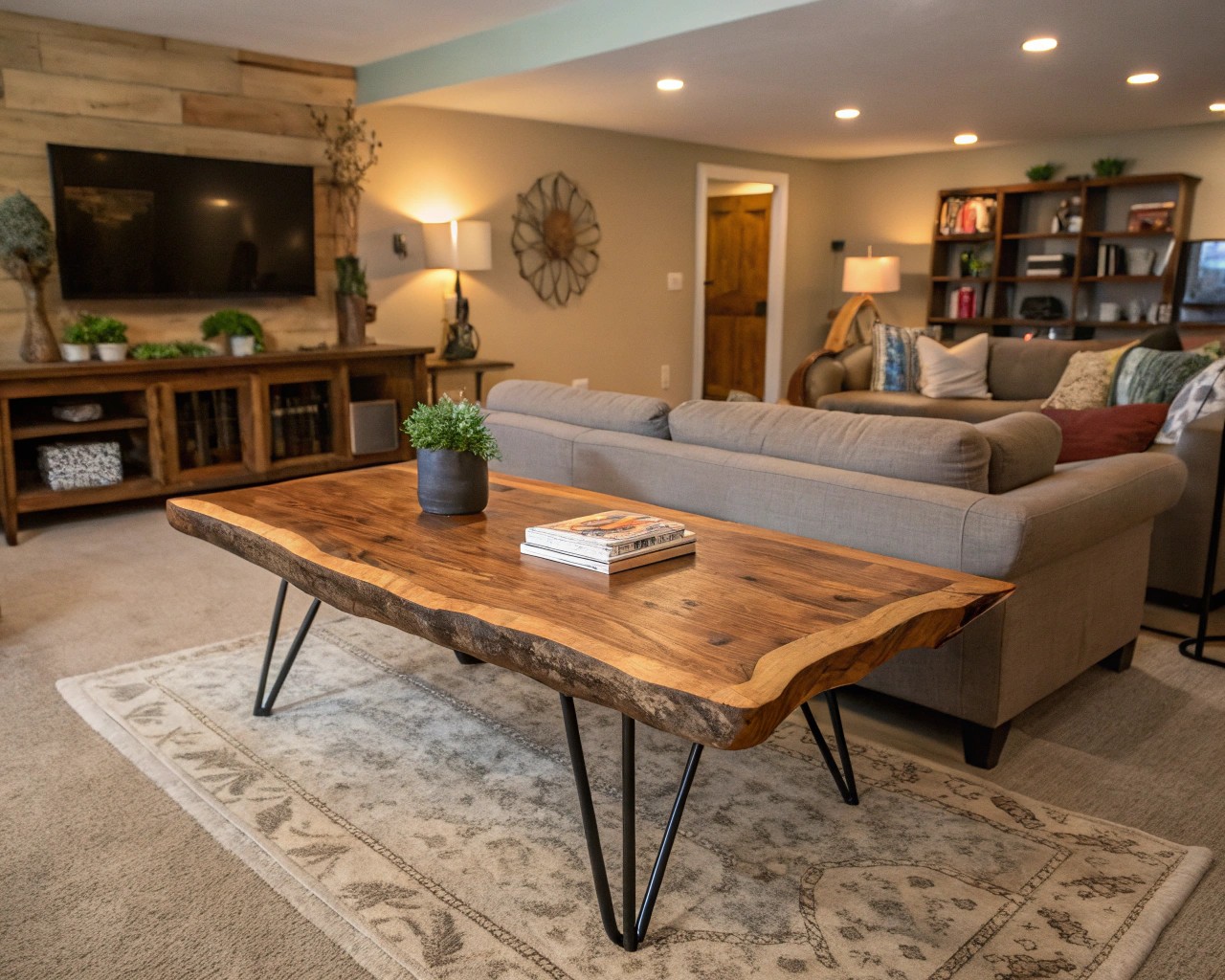
The essence of integrating natural elements starts with careful material choices. Incorporating wood, stone, and natural fibers introduces a multi-sensory experience that anchors your space in nature’s inherent palette.
Wood
Wood imparts warmth, texture, and an enduring quality to any environment. Consider incorporating it via:
- Structural elements (exposed beams, paneling)
- Furniture pieces (dining tables, chairs, shelving)
- Decorative accents (frames, bowls, cutting boards)
- Flooring options (hardwood, bamboo, cork)
I often advise clients to begin with a significant wood feature—like a live-edge dining table or a reclaimed wood accent wall—to establish a foundation of natural warmth. The inherent character and history within each piece of wood forge an immediate connection that synthetic alternatives cannot match.
Stone
Stone elements contribute permanence, texture, and visual intrigue, connecting spaces to the earth’s geological narrative:
- Countertops (granite, marble, soapstone)
- Fireplace surrounds and accent walls
- Flooring options (slate, travertine, river rock)
- Decorative elements (geodes, river stones, sculptures)
Natural Fibers
Textiles offer warmth, acoustic softening, and tactile comfort:
- Window treatments (linen, cotton, bamboo)
- Upholstery (wool, cotton, hemp)
- Rugs and floor coverings (jute, sisal, wool)
- Bedding and pillows (organic cotton, linen)
Plants and Living Elements
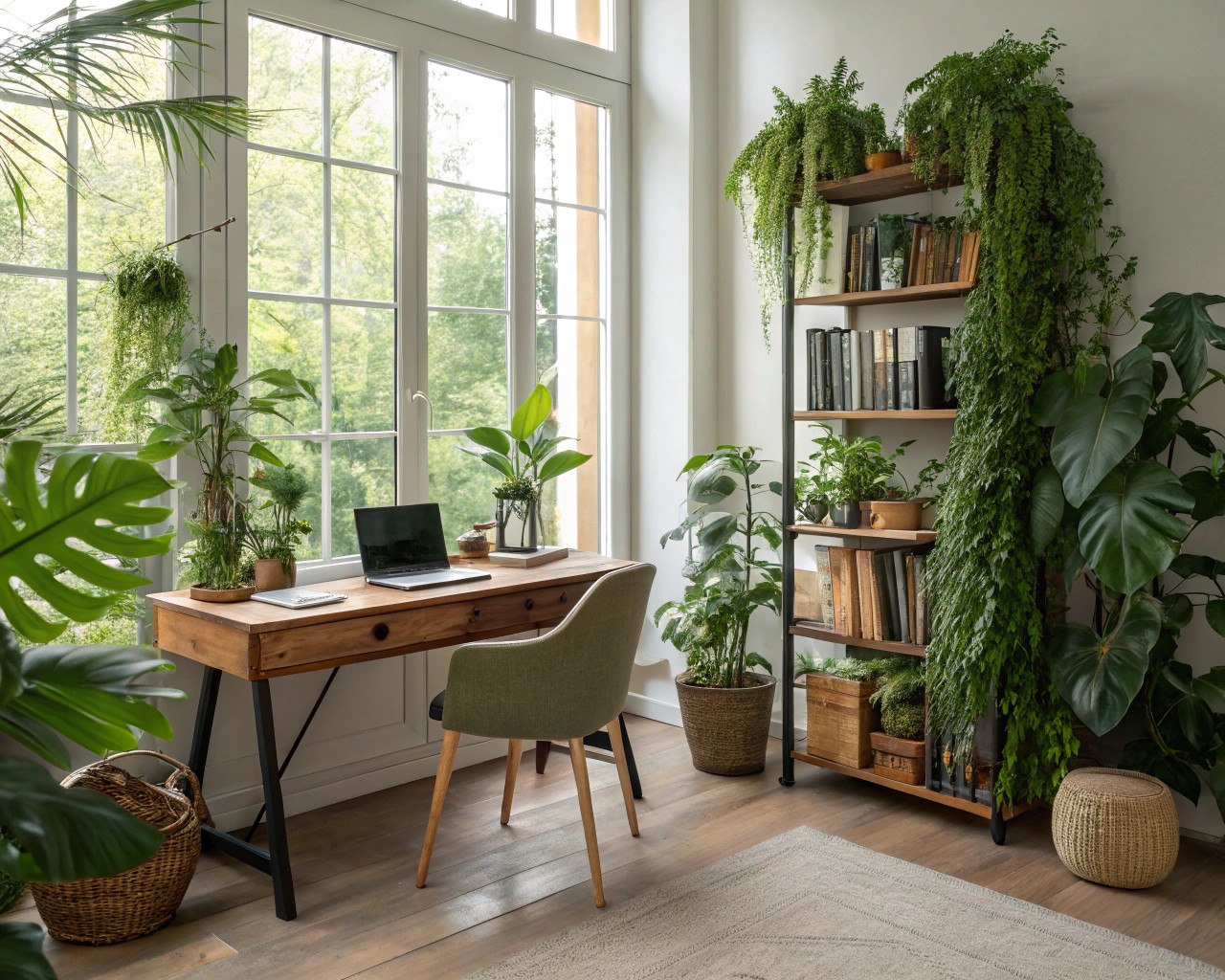
Plants represent arguably the most direct method for bringing nature inside, providing advantages that significantly surpass mere appearance.
| Plant Type | Benefit | Maintenance Level | Best Placement |
|---|---|---|---|
| Monstera | Air purification, visual impact | Low-Medium | Living rooms, offices |
| Snake Plant | Nighttime oxygen, air filtering | Very Low | Bedrooms, low-light areas |
| Pothos | Air purification, versatility | Low | Hanging/trailing, any room |
| Ferns | Humidity, air cleaning | Medium-High | Bathrooms, humid areas |
| Succulents | Visual interest, oxygen | Very Low | Sunny windowsills, desks |
When choosing plants, evaluate not only their look but also the specific environmental conditions of your room. In a recent project for a busy professional couple, we thoughtfully positioned low-maintenance snake plants and ZZ plants in their bedroom and office. Concurrently, we installed an automated watering system for the more demanding ferns located in their naturally humid bathroom. This approach resulted in a unified indoor garden that offered maximum benefits with minimal upkeep.
Water Features
Water elements engage multiple senses through sound, motion, and reflected light. These can range from impressive installations to subtle tabletop pieces:
- Wall-mounted fountains
- Freestanding water features
- Tabletop fountains
- Indoor ponds (with appropriate waterproofing)
- Aquariums (which combine water and living elements)
We recently integrated a discreet wall fountain in a client’s entrance hall. This addition served not only as an attractive focal point but also established a transition zone, subtly lowering stress and signaling a sense of “arrival” to visitors.
Natural Light
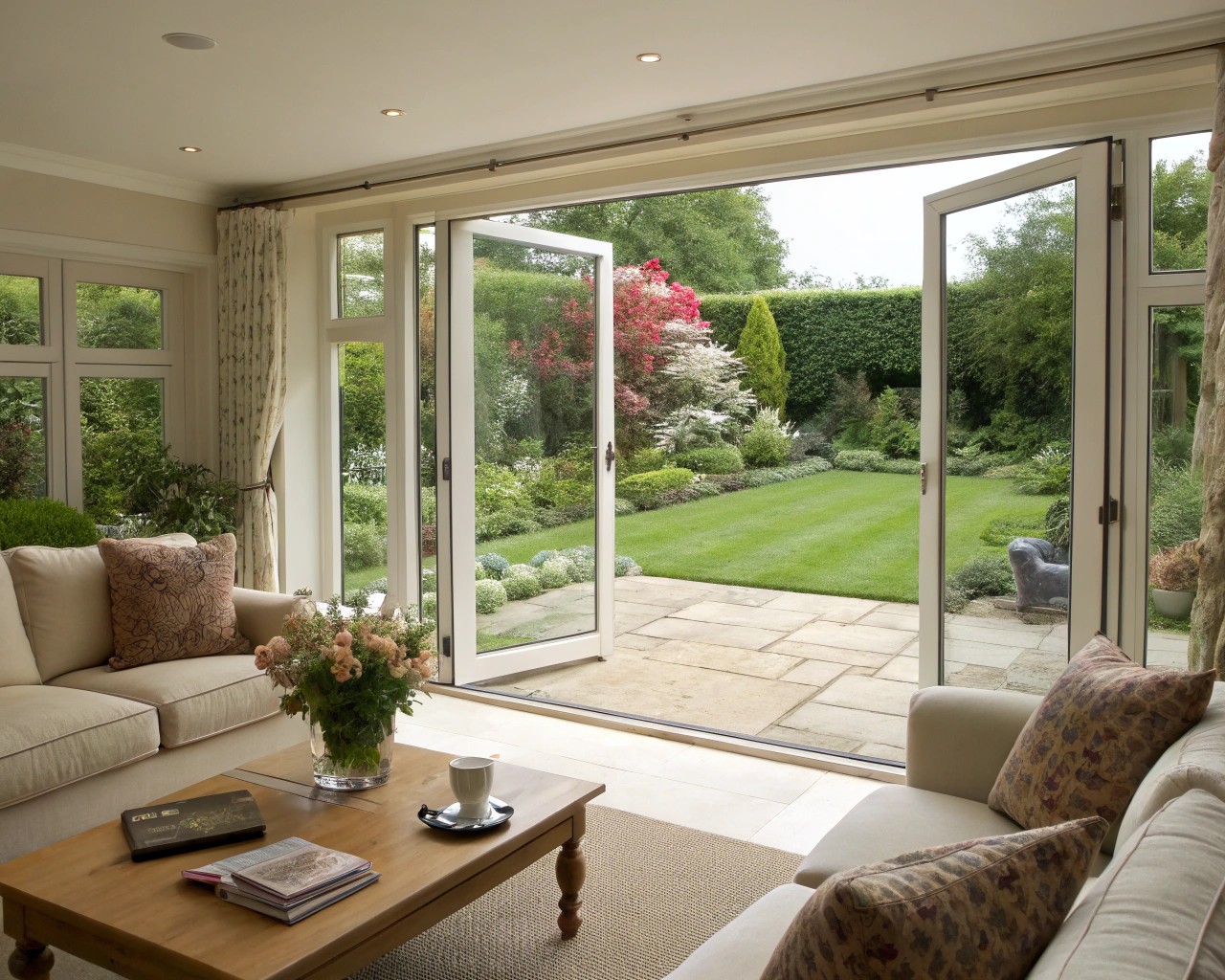
Light stands out as potentially the most impactful natural element available to designers. Maximizing and managing natural light crafts spaces that feel vibrant and attuned to nature’s rhythms.
Methods for optimizing natural light involve:
- Removing unnecessary window coverings
- Using reflective surfaces to bounce light deeper into spaces
- Installing skylights or solar tubes where appropriate
- Placing mirrors strategically opposite windows
- Using glass doors or transoms between rooms
My experience shows that even in difficult areas with few windows, smart light management can drastically improve the atmosphere. For one basement office project, installing light shelves and high-reflectance ceiling paint helped draw the limited light further into the room. This was complemented by full-spectrum lighting designed to mimic natural daylight cycles.
Biophilic Design Principles in Action
Biophilic design extends beyond merely placing plants in a room; it’s a structured methodology for weaving nature’s patterns and processes into our built surroundings. The concept stems from our innate affinity for the natural world and offers a framework for deeper, more meaningful integration.
The 15 Patterns of Biophilic Design
Biophilic design is often explained through 15 core patterns, adaptable to diverse environments:
- Visual Connection with Nature: Direct views to natural elements
- Non-Visual Connection: Incorporating sounds, textures, and scents of nature
- Non-Rhythmic Sensory Stimuli: Unpredictable natural movements (like dappled light)
- Thermal & Airflow Variability: Creating microclimate variations
- Presence of Water: Incorporating water elements
- Dynamic & Diffuse Light: Mimicking natural light patterns
- Connection with Natural Systems: Showing seasonal changes
- Biomorphic Forms & Patterns: Nature-inspired shapes and forms
- Material Connection with Nature: Using minimally processed natural materials
- Complexity & Order: Balanced sensory information like in nature
- Prospect: Unimpeded views over distances
- Refuge: Protected spaces with outlook
- Mystery: Partially revealed information that entices exploration
- Risk/Peril: Thrilling elements with reliable safeguards
- Awe: Moments of wonder and perspective shift
Case Study: The Green Workspace Transformation
One particularly rewarding project involved converting a sterile corporate office into a workspace infused with nature. The client, a marketing firm, aimed to enhance creativity and lower employee stress levels.
Key integrated elements included:
- Floor-to-ceiling windows overlooking a landscaped courtyard (Pattern 1)
- Natural ventilation system with operable windows (Pattern 4)
- Central water feature creating soothing background sounds (Pattern 5)
- Wood and stone materials throughout (Pattern 9)
- Living wall in the main collaboration area (Pattern 1)
- Varied ceiling heights creating both expansive and intimate spaces (Patterns 11 & 12)
Six months post-completion, the firm noted a 23% decrease in sick days and markedly improved employee satisfaction. The revitalized space became a key asset in attracting talent, highlighting the concrete advantages of applying biophilic design principles.
Room-by-Room Integration Guide
Living Spaces
Living rooms present numerous chances for integrating natural elements:
- Focal Points: Consider replacing traditional media centers with stone fireplaces or living walls
- Furnishings: Opt for pieces featuring visible wood grain and natural upholstery
- Accents: Arrange plants at various levels (floor, table, hanging)
- Views: Position seating to optimize connection to windows and natural light
- Textures: Layer natural textiles to add depth and comfort
Kitchens and Dining Areas
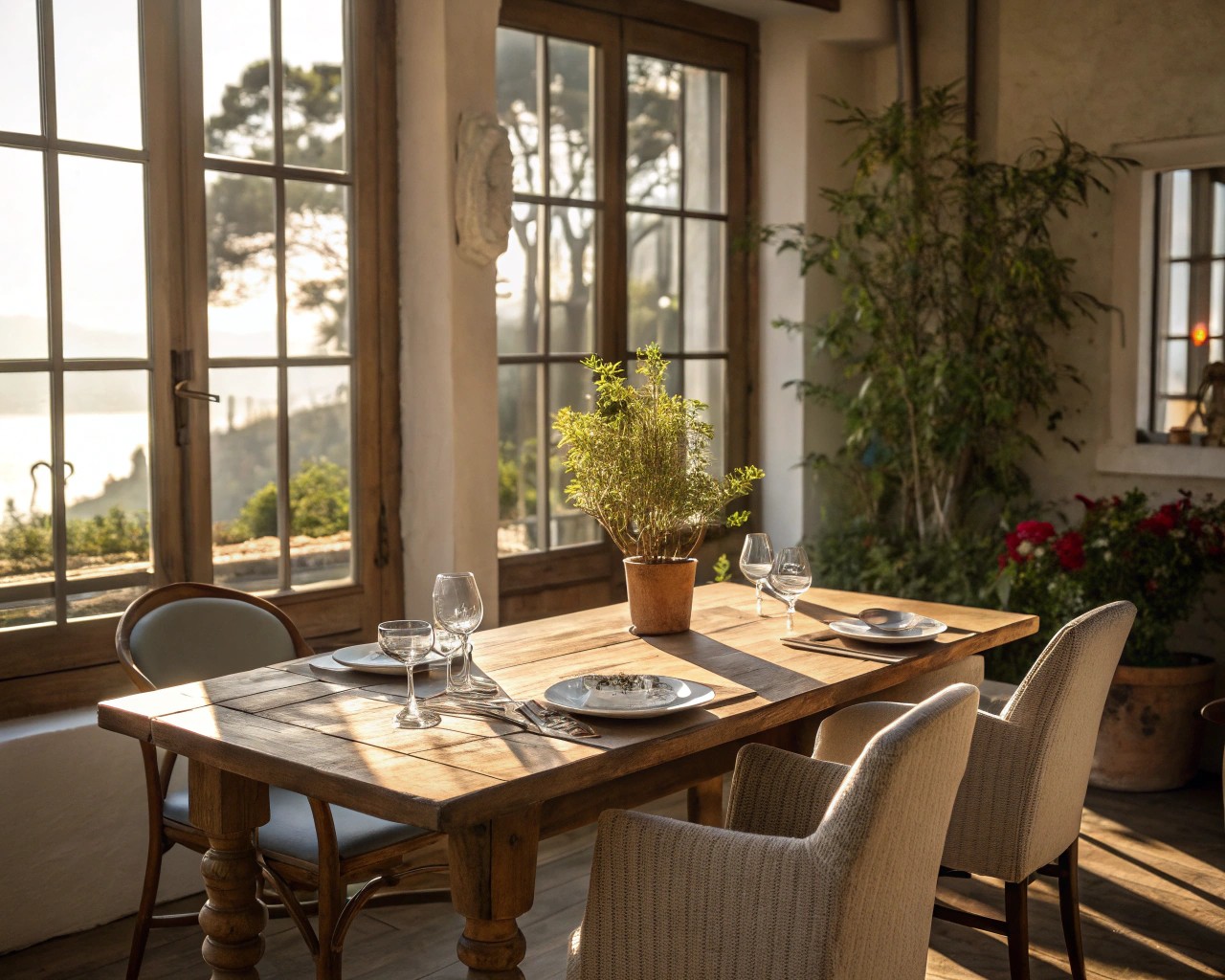
Kitchens link us to the fundamental activity of food preparation, making them ideal for natural integration:
- Countertops: Select stone, wood, or composite materials displaying natural patterns
- Backsplashes: Explore options like stone, handmade tile, or other natural materials
- Herb Gardens: Set up window-sill herb gardens for both utility and visual appeal
- Lighting: Maximize natural light, especially over food preparation zones
- Materials: Reveal natural wood in cabinetry or ceiling beams
While redesigning a kitchen for a Seattle family, we focused on maintaining the link to their garden. This involved installing large sliding doors and creating an indoor herb wall that mirrored their outdoor vegetable patch. The smooth transition between indoor cooking and outdoor growing areas enriched their connection to food preparation.
Bedrooms
Bedrooms gain significantly from natural elements that encourage rest and renewal:
- Bedding: Opt for natural fibers such as linen, cotton, and wool
- Plants: Choose species recognized for air purification and oxygen release
- Materials: Incorporate wood through furniture and flooring choices
- Light Control: Employ natural fiber window treatments for adjustable light levels
- Air Quality: Ensure good ventilation and consider adding air-purifying plants like snake plants
Bathrooms
Bathrooms provide distinct opportunities to craft spa-like atmospheres using natural elements:
- Water Features: Emphasize water as the core element with rainfall showers or soaking tubs
- Stone: Utilize stone on counters, floors, or within shower enclosures
- Plants: Select humidity-tolerant varieties such as ferns and orchids
- Wood Accents: Introduce cedar or teak elements (ensure proper sealing against moisture)
- Natural Light: Maximize daylight ingress while maintaining privacy using frosted glass or skylights
Home Offices
As remote work becomes more common, incorporating natural elements into office spaces is crucial for wellbeing and focus:
- Desk Placement: Arrange work surfaces to benefit from maximum natural light and outdoor views
- Plants: Include several plants within eyesight to offer restful visual breaks
- Materials: Favor natural wood for desks and shelving
- Air Quality: Maintain good airflow and include air-purifying plants
- Biomorphic Patterns: Integrate nature-inspired designs in artwork or textiles
I personally enhanced my own home office by positioning my desk towards the window instead of facing a wall. Adding a small tabletop fountain and cultivating a collection of plants that need weekly care creates a ritual, prompting beneficial breaks during the workday.
Creating Indoor-Outdoor Connections
The most effective natural integration occurs when the lines between indoor and outdoor environments are intentionally blurred:
- Threshold Spaces: Develop transitional zones like covered porches or sunrooms
- Material Continuity: Employ the same flooring material both inside and outside
- Visual Connection: Frame specific outdoor vistas through careful window placement
- Sliding/Folding Doors: Install door systems that open completely, removing physical barriers
- Indoor/Outdoor Furniture: Choose pieces designed to function effectively in both settings
For a project in California, we designed a living room featuring sliding glass walls that retract entirely. This allows the area to serve as a traditional indoor room during cooler months and transform into an open-air pavilion when weather permits. The stone flooring extends unbroken from the interior to the exterior, reinforcing this seamless connection.
Seasonal Adaptations for Natural Elements
Embracing seasonal shifts is one of the rewarding aspects of incorporating natural elements:
- Spring: Introduce flowering plants and lighter-weight textiles
- Summer: Highlight cooling elements such as water features and promote air circulation
- Fall: Bring in harvest-themed elements and adopt warmer color schemes
- Winter: Add evergreen plants and increase the use of textural materials for coziness
I often guide clients in developing a seasonal rotation strategy for textiles, plants, and decorative items. One family I collaborated with maintains a dedicated storage space for seasonal natural accents—pressed autumn leaves for fall table decor, driftwood gathered from summer beach excursions, and forced bulbs to introduce color during winter.
Budget-Friendly Natural Integration
Integrating natural elements doesn’t necessarily require a large budget:
- Start Small: Begin with a few key plants and gradually expand your collection
- Repurpose: Utilize found natural items (driftwood, unique stones, branches) as decor
- DIY: Construct your own living wall using pocket planters or basic shelving units
- Prioritize: Invest in a single, impactful natural element rather than numerous smaller items
- Source Wisely: Check stone yards for remnants or salvage yards for reclaimed wood
One of my most fulfilling budget-conscious projects involved assisting a young couple in transforming their apartment solely with found and salvaged natural materials. We fashioned a striking dining table from a section of a fallen tree, showcased their collection of beach stones as art pieces, and propagated plants from cuttings to cultivate a verdant interior landscape at minimal expense.

